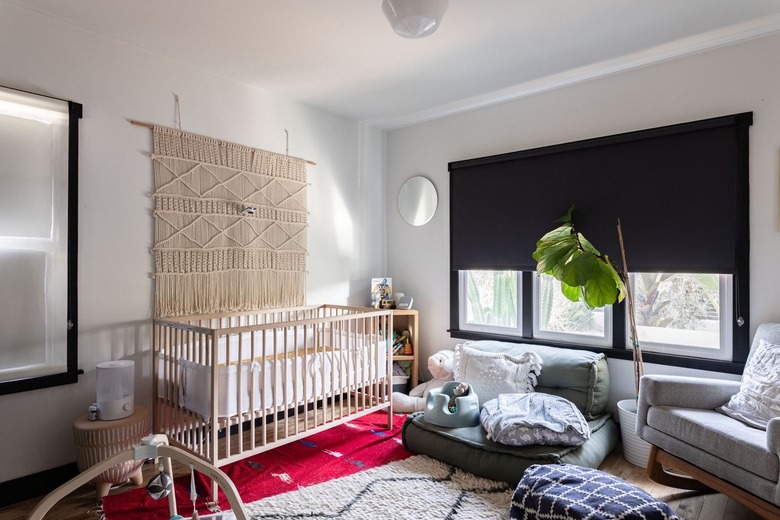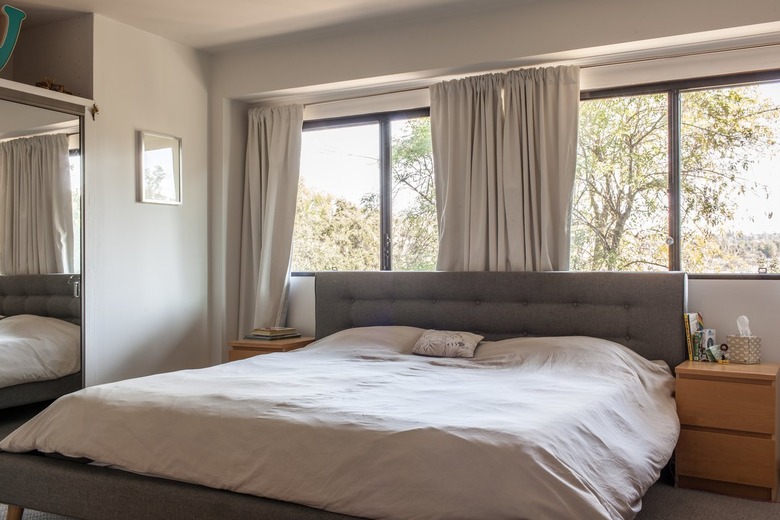Do Blackout Curtains Actually Keep Our Homes Cool?
If you take blackout curtains at face value, you're probably only using them to keep light out — and they're great at that task! But the light-blocking window treatments are actually excellent thermal insulators as well, working hard to keep the temperature steady in your home.
Insulation is key to regulating the temperature inside a house, which prevents you from spending a fortune on heating and cooling. Unfortunately, glass is not a good insulator, so windows serve as a major gateway for energy exchange between the natural elements outside and the controlled environment inside.
In the winter, the cold air from outside will seep in through the window, while the warm air from your furnace or fireplace will escape. During the summer, the opposite happens, with heat coming in and cool air going out. "In newer homes, the midday sun is the major culprit," Haley Weidenbaum, founder of window treatment company Everhem, tells Hunker. "As it pours into your home, the sun heats up your space and, therefore, drives up your air conditioning bill."
That's where curtains and drapes come in — they create a barrier between the sun's rays and the cool air inside a space, keeping the former out and the latter in. "[They] will reduce thermal transference, meaning [they] will keep the temperatures on either side of the curtain panel stable," Angela Boswell, co-founder of curtain company The Drape, tells Hunker. "The thicker the curtain or more dense the weave structure, the less transference will occur."
As far as window treatments go, blackout curtains are some of the thickest and densest options, since they need to be tightly woven to prevent light leaks. As such, that makes them highly effective insulators.
But not all blackout curtains are created equally. Window treatment company Classic Blinds & Shutters performed a study on the energy savings of different window coverings. "Our conclusion from this is that using blackout blinds is effective, but that color had an enormous impact," the company's owner, Beverly Fidler, tells Hunker. "White was much better at reflecting radiant heat — that is, heat generated from light — and black was much better at absorbing light rays."
In other words, when you're shopping for blackout curtains for heat-related purposes, you should consider lighter colors, as they will actually serve better than darker colors. But to get the best of both worlds, you'll want to find a blackout curtain that has white backing to reflect radiant heat but a darker main fabric to prevent light leaks. And to make things even more complicated, some blackout curtains even have special thermal insulation layers — there are a lot of variables for you to consider.
It's also possible to layer window treatments on your own to create the most beneficial combination for your particular temperature and lighting needs. "A set of Roman shades tucked under linen drapery not only looks elegant, but proves to be functional," says Weidenbaum. "For instance, when you want a touch of natural light, but not direct exposure, you can open the shades and close the drapes. Or, if you need more protection from the sun, pull down the shades and close the drapes. You'll get double the coverage!"
So before you write off window treatments as an unnecessary expense, consider their many practical uses — and the money you might save on your energy bills!

